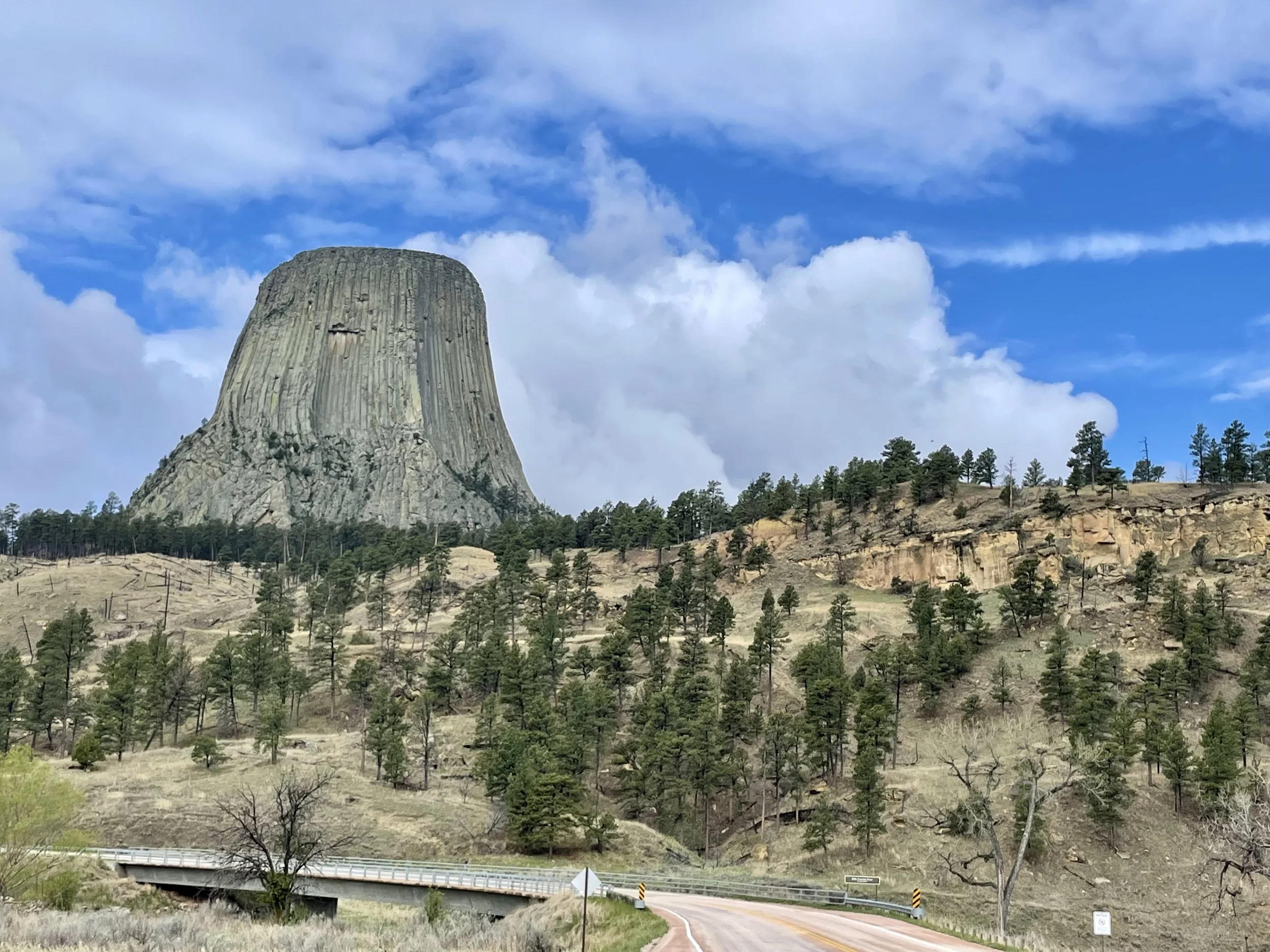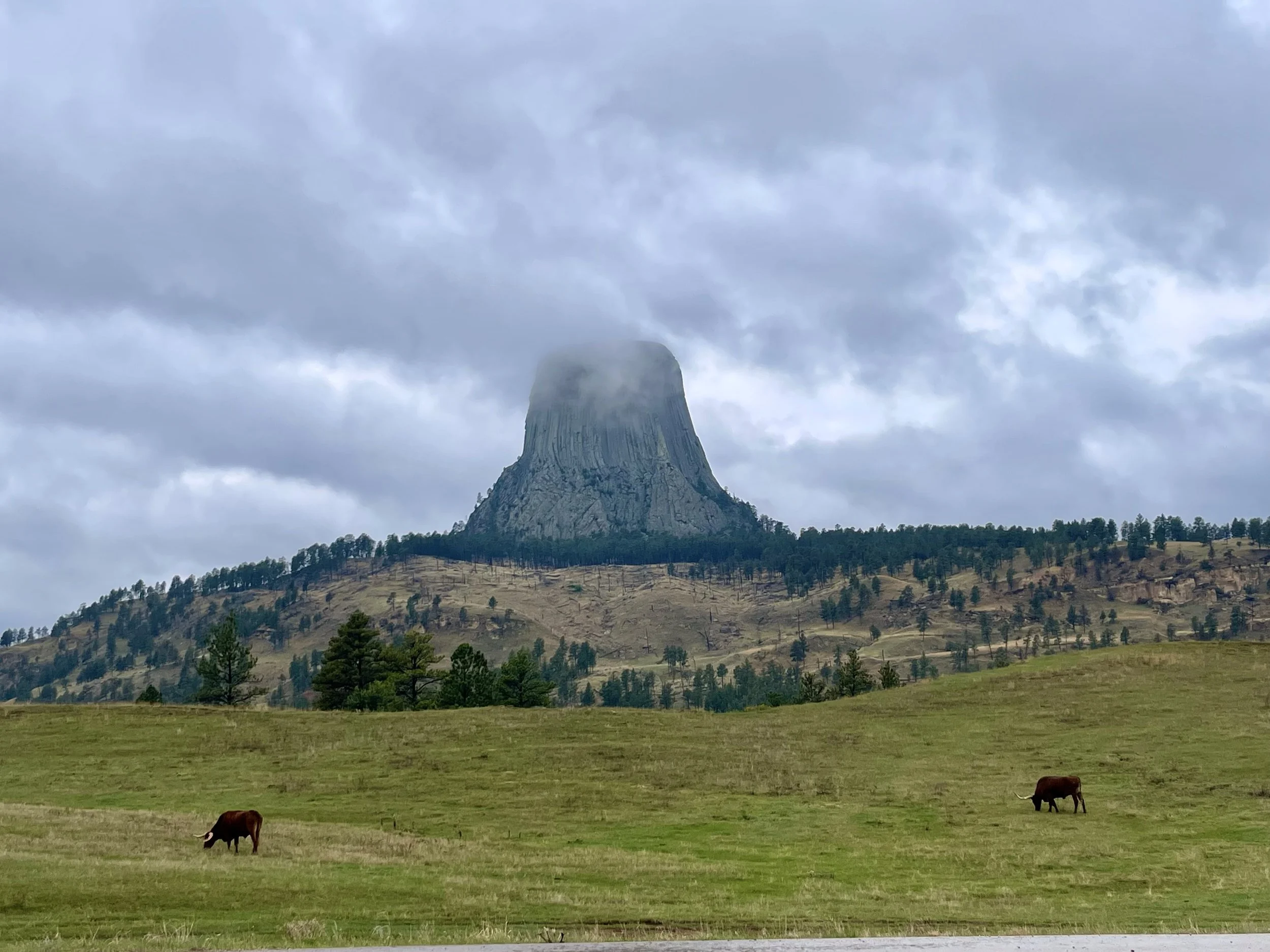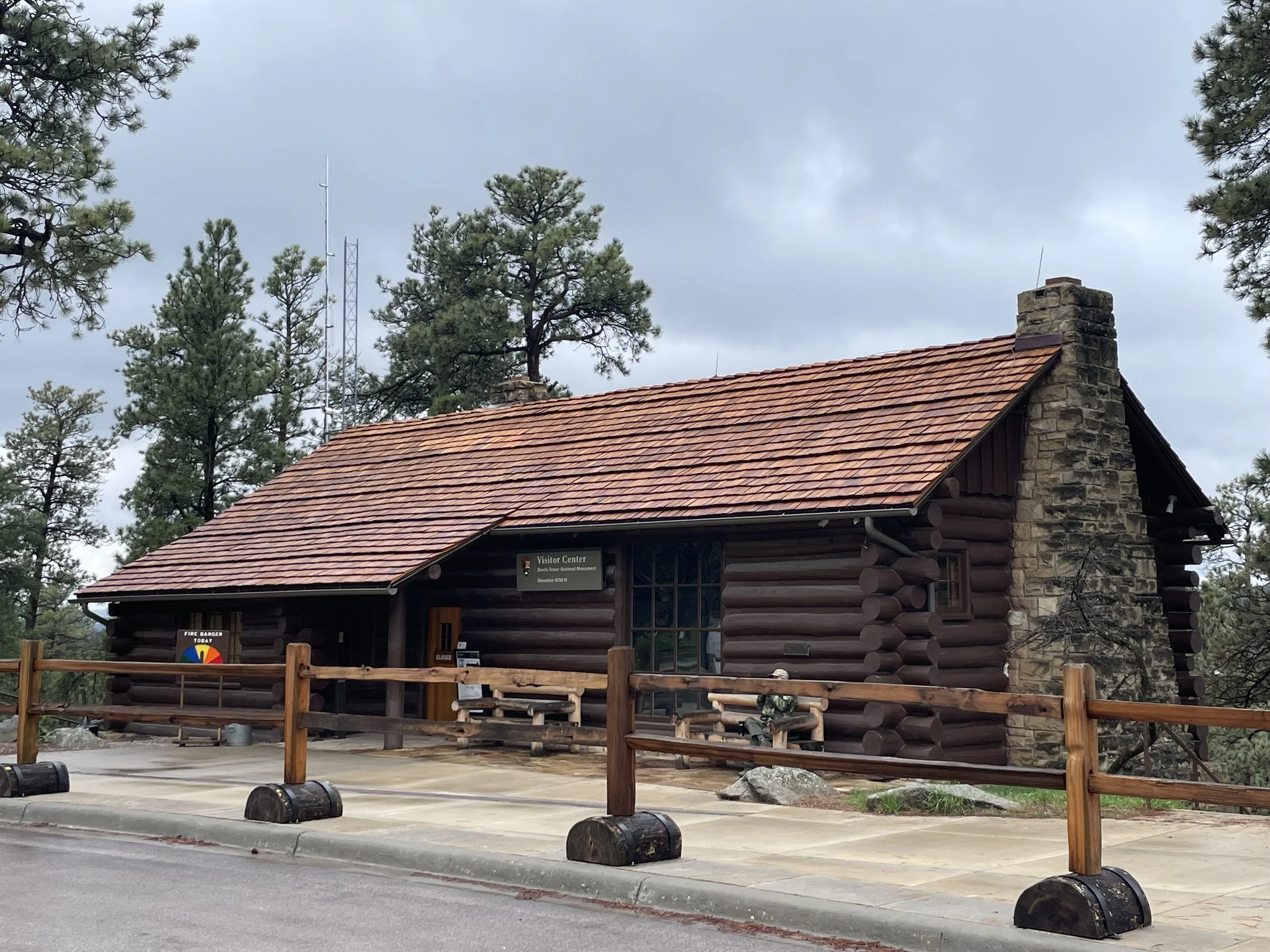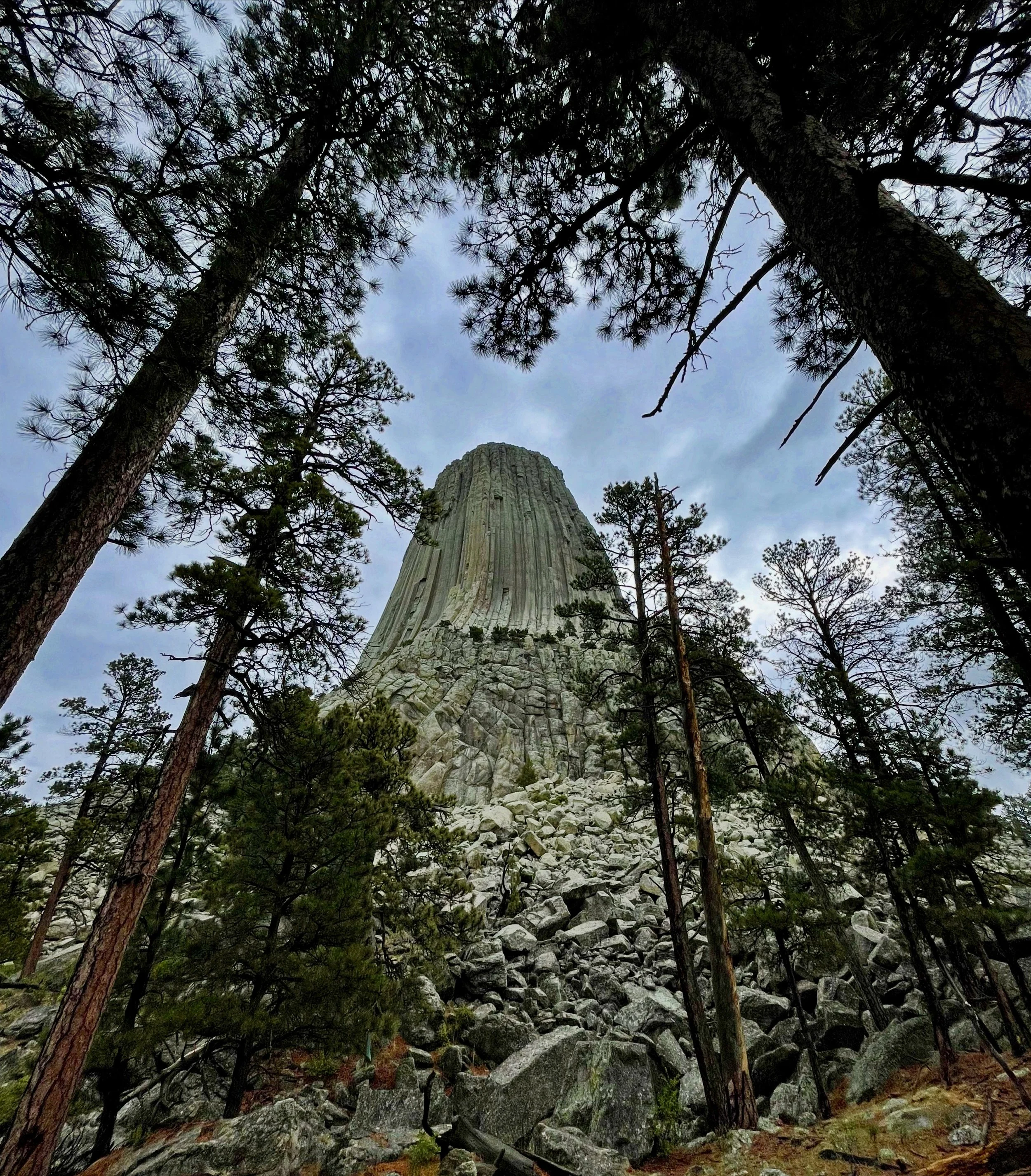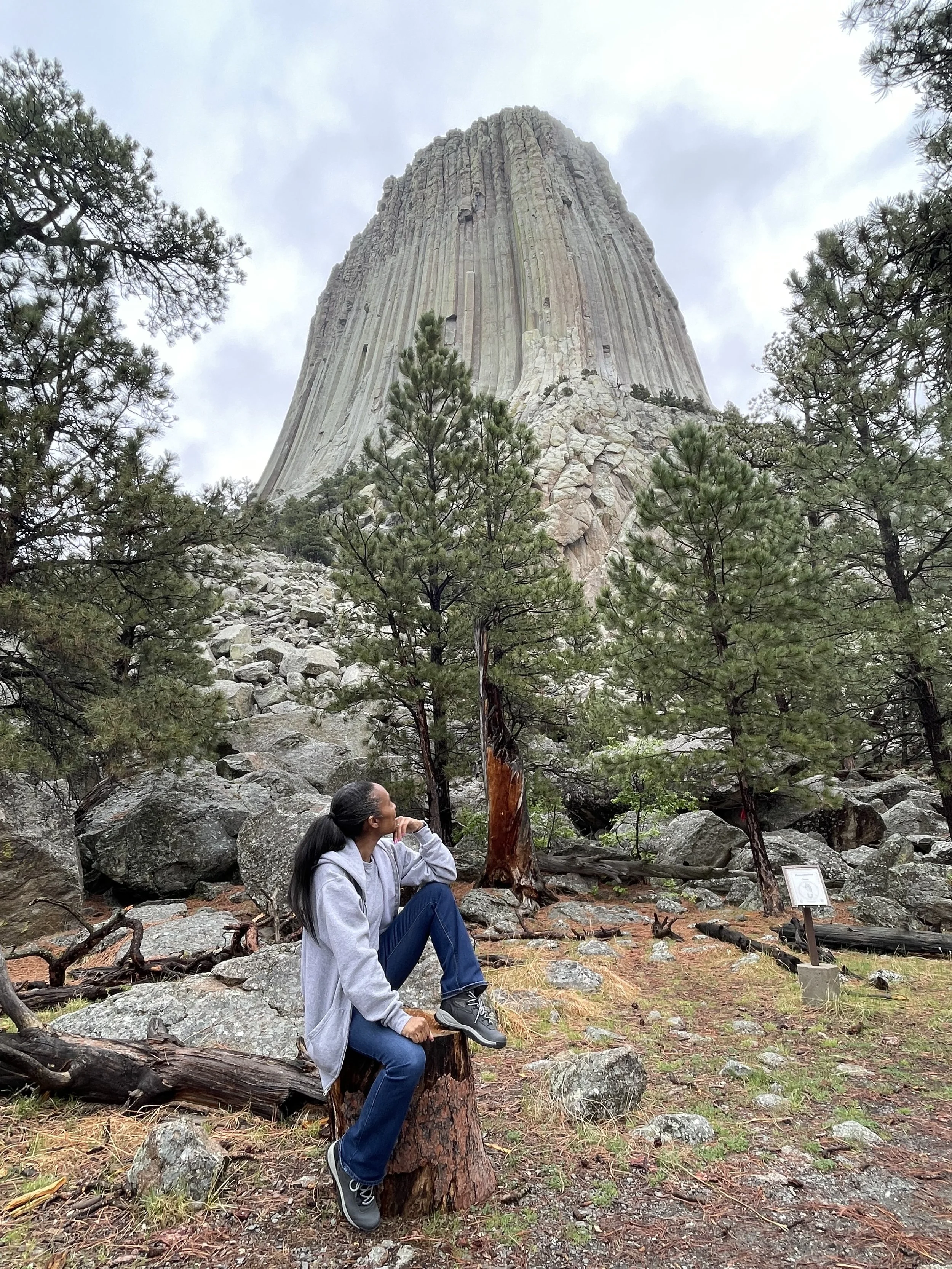Devils Tower National Monument
My trip to Devils Tower started very early on a Wednesday morning in May. I was staying in Rapid City, South Dakota, and decided to make the day trip west into Wyoming. My first introduction to Devils Tower was through my mother, who showed me the 1977 film Close Encounters of the Third Kind. The tower is prominently featured in the movie, and my mother, who adores the film, had always dreamed of seeing it in person.
The drive from Rapid City took about two and a half hours. Rain followed me almost the entire way, turning the hills and pastures a silver-washed green. Even through clouds, the landscape was striking, and I imagined how much sharper it would look on a clear day.
The Drive from Rapid City
From Rapid City, I took I-90 west through the Black Hills, passing Sturgis, a town best known for its massive annual motorcycle rally. Farther along is Spearfish, where the rolling plains start to meet the first dramatic cliffs of the Black Hills. I exited at Sundance, Wyoming, then followed Highway 14 north before turning onto Highway 24, which leads directly to the monument.
The route winds through small Wyoming towns and wide stretches of ranch land. Along the way, you see cattle grazing, red rock outcrops, and distant ridge-lines. The farther you go, the more isolated it feels until suddenly the tower rises above the horizon. It is impossible to miss. A solitary giant standing against the sky.
First Impressions
At the entrance, I stopped at the fee station and FaceTimed my mother. It felt wrong to see the tower without her, so sharing that moment virtually was the next best thing. From there, I drove the short winding road up to the visitor center at the base. Because it was still early and the visitor center doors weren’t open yet, I picked up my National Park Passport stamp from the small booth outside.
Devils Tower holds deep cultural significance to many Native American tribes, and the site is treated with respect. I walked the paved trail circling the base, stopping often for photos. The low clouds gave the columned rock a moody, dramatic look. By the time I left around 10 a.m., the sky had begun to clear just as the first tour buses arrived. Watching the tower shift from shrouded gray to set against a bright blue sky felt like two visits in one.
It was well worth the drive.
A Bit About The Park
• First U.S. National Monument (1906): Devils Tower was designated by President Theodore Roosevelt as the very first U.S. National Monument under the Antiquities Act. This decision set an important precedent for preserving natural and cultural landmarks across the nation.
• Geology: The tower rises 867 feet from base to summit, with striking vertical columns that make it one of the most recognizable geologic features in North America. Scientists describe it as an igneous intrusion, formed when magma cooled and hardened underground about 50 million years ago. Over time, softer rock eroded away, leaving the dramatic hexagonal columns we see today.
• Sacred Site: For many Native American tribes including the Lakota, Cheyenne, Crow, Arapaho, Kiowa, and Shoshone, Devils Tower has long been a place of deep cultural and spiritual significance. Visitors often notice prayer cloths and ceremonial bundles tied to trees near the base, symbols of ongoing traditions and reverence.
• Legends and Stories: Tribal oral histories offer different explanations for the tower’s creation. A well-known legend tells of children pursued by a bear. The Great Spirit lifted the ground to save them, and the bear’s claws left the vertical grooves along the sides of the tower. Other stories describe it as a place of refuge, transformation, or spiritual testing, each reflecting the tower’s enduring role in Native culture.
• Wildlife and Surroundings: The monument protects not only the tower but also the surrounding pine forests, prairies, and the Belle Fourche River. Prairie dogs, deer, and wild turkeys are commonly seen, and bald eagles can sometimes be spotted circling overhead.
• Climbing and Respect: Devils Tower is internationally known for climbing. The many parallel cracks make it an ideal location for the sport, attracting climbers from around the world. In June, a voluntary climbing closure is observed to honor Native ceremonies, a practice that highlights the balance between recreation and respect.
Devil’s Tower Visitor Center
Devils Tower Visitor Center
WY-110, Devils Tower, WY 82714
• Built in the 1930s by the Civilian Conservation Corps.
• Offers exhibits on geology, history, and Native significance.
• Passport stamps available.
• Open daily spring through fall; reduced hours in winter (typically 9 a.m. – 4 p.m.).
Passes and Fees
• Entrance Fee: $25 per vehicle (valid for 7 days)
• America the Beautiful Pass: Accepted
• No reservations required for general entry
Most Visited Places in the Monument
• Tower Trail (1.3 miles) — Main paved loop circling the base.
• Joyner Ridge Trail (1.5 miles) — Quieter loop with expansive views from a distance.
• Prairie Dog Town — Easy roadside stop to watch prairie dogs pop in and out of burrows.
Best Hikes
• Tower Trail (1.3 miles) — Paved and easy, circling the tower itself.
• Joyner Ridge Trail (1.5 miles) — Short, scenic, and especially good at sunrise or sunset.
• Red Beds Trail (2.8 miles) — Loops around with sweeping views of the tower and Belle Fourche River valley.
Best Photo Spots
• Entrance Road Pullouts — Classic view of the tower rising above the trees.
• Tower Trail — Close-up perspective on the massive vertical columns.
• Joyner Ridge — Wide-angle views, golden hour perfection.
Accessibility
• Visitor Center and Tower Trail are accessible, though the trail has some incline.
• Prairie Dog Town viewable from the car.
• Red Beds and Joyner Ridge are natural-surface trails, not wheelchair-friendly.
Other Helpful Info
• Weather: Summers hot, winters icy; spring and fall are mild.
• Food & Gas: Limited near the monument; stock up in nearby Sundance, WY.
• Cell Service: Good near the visitor center, weaker farther out.
• Climbing: Allowed, but there is a voluntary June closure to honor tribal ceremonies.

